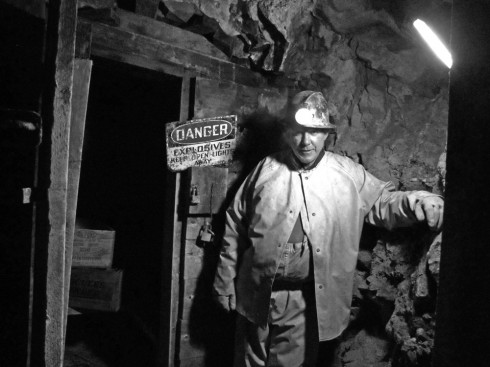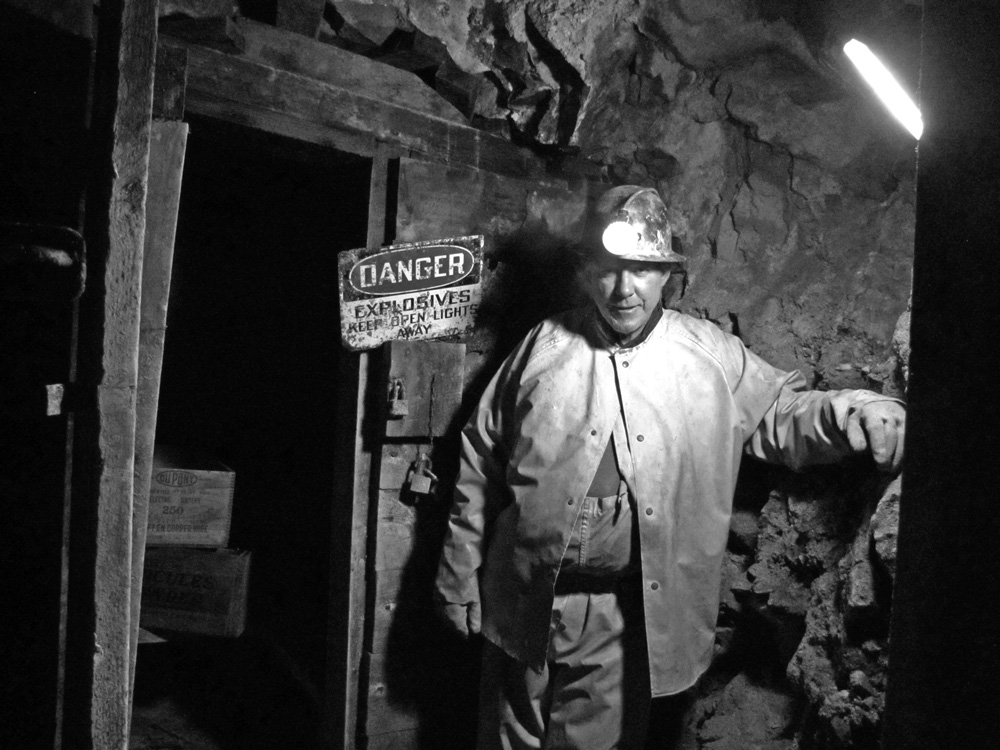By Lynda LaRocca
If you really want to preserve the past, it helps to purchase part of it.
Just ask Bob Calder.
Calder owns the Hopemore Mine, which offers Leadville’s only guided walking tour of a hardrock or underground mine.
Located at an 11,560-foot elevation in the city’s historic mining district, the Hopemore began operations in 1908; it remained a working mine until about a decade ago.

That the Hopemore even exists in its present incarnation is due to the determination of Calder, a former hardrock miner who honed his skills at places like Lake County’s Climax molybdenum mine and Park County’s London gold mine. Calder opened the Hopemore to the public in 2010 as a tribute to Leadville, the frontier West’s wildest, roughest, richest silver camp.
“The history of Leadville is mining,” says Calder. “And it’s really important to me that people know this history.”
A talented visual artist (see “Capturing Leadville’s Past: The Art of Bob Calder” in the October 2003 Colorado Central) whose illustration of the Hopemore’s headframe appears on its entrance sign and advertising brochures, Calder is the mine’s maintenance man and its safety expert, assuring compliance with state-mandated regulations.
He’s also its chief tour guide.
Prior to descending 600 feet below the surface in the “cage,” a moveable structure in a mine shaft that vertically transports workers and equipment, Calder shows visitors the hoist room. This area houses the massive electric motor and hoist drum that raise and lower the cage, which is attached to a cable mounted on a pulley wheel atop the 64-foot-high headframe.
Then he explains how – and why – miners “brass in” at the start of a shift.
This low-tech but extremely effective system uses little more than a wooden board hung with metal tags or “brass” to indicate the number of individuals in the underground at a specific time.
Before starting work, each miner removes a single tag from the board. At shift’s end, the miners “brass out” by returning their brass to the board; a missing tag signals that someone has been left behind, perhaps due to injury or accident.
After a rattling ride down the dark shaft, the tour continues along 400 feet of mine-gauge track through a damp, dimly lit, horizontal tunnel or drift lined with displays of antique and modern mining equipment.
Calder discusses blasting methods, shows how ore cars haul “muck” or rock that has been broken by blasting, and recounts the history of Leadville’s mining district, which has yielded more than $5 billion in gold, silver, lead, zinc, copper, molybdenum, and other minerals over the past 150 years.
Shining his cap lamp at leach deposits of bright-blue copper sulfate on the drift’s “ribs” or walls, Calder details the geology of the Hopemore, a gold-silver-lead-copper-zinc mine that has produced ore grading more than 1.29 troy ounces of gold per ton.
He even demonstrates rock-drilling techniques, using a hammer and chisel-like hand steel for frontier-era “single-jacking” and a modern, jackleg-type mechanical drill.
The first mechanical drills were known as “widowmakers” because miners who inhaled the rock dust generated by these “dry” drills often developed, and died from, a lung disease called silicosis.
These “rocked up” or “dusted” miners succumbed slowly to a kind of internal suffocation, a fate that hardly seems worth the average three dollars a day earned during the 1880s for a backbreaking, 10-to-12-hour shift in the underground.
Of course, modern mining can be equally hazardous. During his career, Calder worked as a hang-up timberman, an extremely dangerous job that involves clearing blocked ore passes using strategically placed sticks of dynamite. After positioning the dynamite, the hang-up man must get out of the blocked area fast – before detonation releases tons of rock.
But Calder shrugs off the danger. “Mining gets in your blood,” he says. “Once you start, you never want to give it up.”
For more info visit: www.hopemoreminetour.com
Lynda La Rocca stays cool in Twin Lakes when she’s not exploring the underground.


